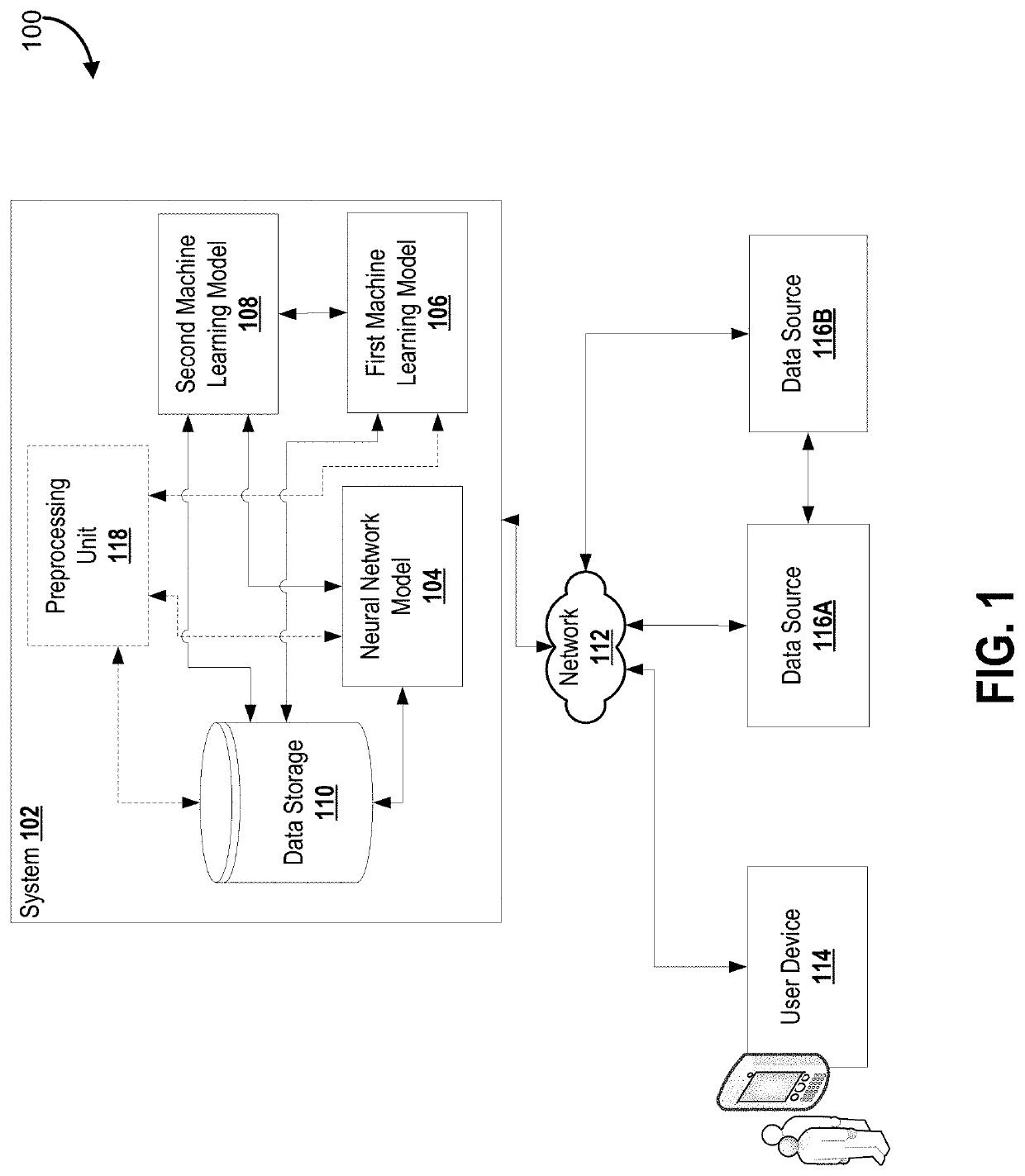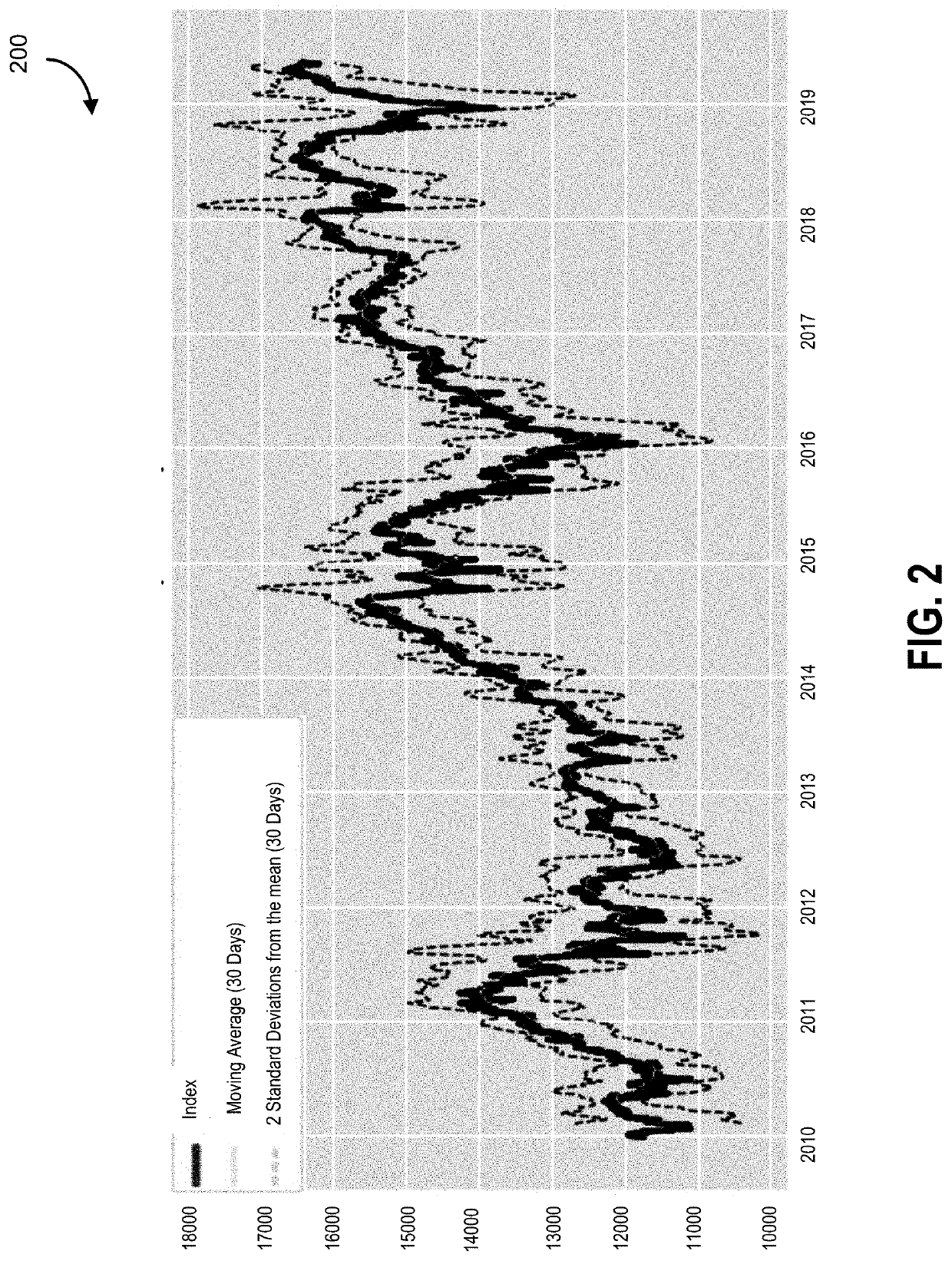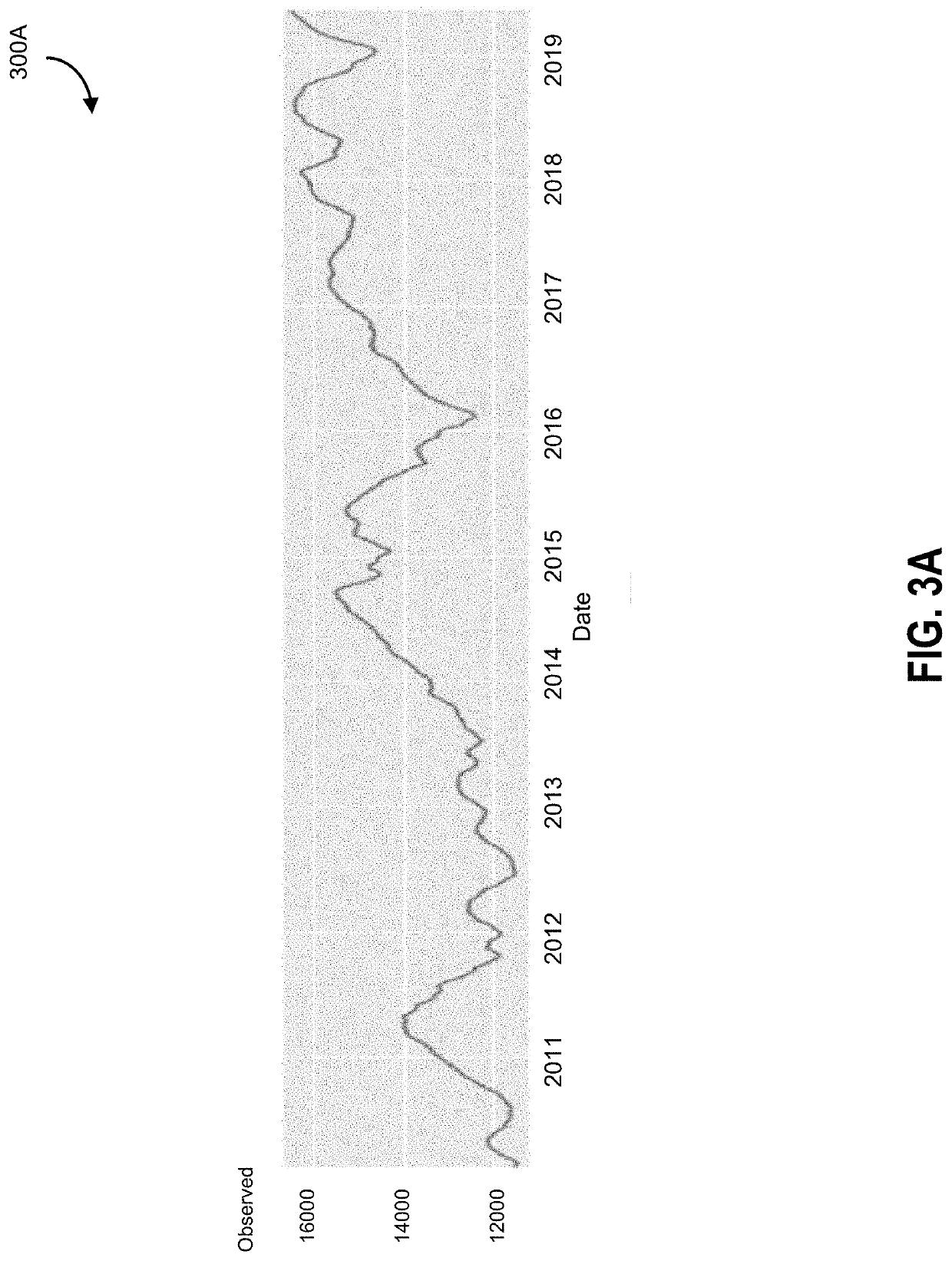Predicting capital raising opportunities in the financial industry is difficult as a result of the large volume of data which may be necessary in order to reveal a pattern indicative of capital raising opportunities.
The process may be: expensive, as assembling various data from various data sources can be
time consuming and cost prohibitive; prohibitively slow, as
processing large amounts of data can require a
processing time which prevents acting on the identified capital raising opportunities; inaccurate, as the various data sets can be structured or unstructured and difficult to integrate, and extracting the relative importance from the data sets may be difficult to accurately determine; and resource intensive, requiring large amounts of computing power in order to process.
Accordingly, a technical problem arises in respect of the difficulty in generating meaningful outputs from the data, and a technical solution is desirable in respect of utilizing specific computational approaches that aid in improving the practical tractability of generating outputs from the
processing the data.
A challenge with large numerical and
unstructured data sets is that patterns are difficult to discern as a result of the interrelation between the numerical and unstructured data being unclear.
Moreover, integrating numerical data with unstructured text data may cause issues as the data sets can be difficult to integrate to provide meaningful insight.
This challenge is especially difficult to overcome if there is a large volume of data, such as numerical time-
series data and unstructured textual news data coming from a periodic
data stream.
First, patterns which are visible when all or most of the data is ingested, can become invisible as a result of selective ingesting in response to large volumes of data.
Second, some patterns may only be revealed through a plurality of features, and discovering candidate patterns and tracking the plurality of features in large volumes of numerical and unstructured data can be computationally infeasible, cost prohibitive, and so forth.
Third, some patterns may only become apparent when presented with large enough volumes of data, thereby requiring implicitly the two challenges referred to above in addition to requiring the means to retrieve sufficient information.
However, trends may be obscured both in the volume of data, and possible trends may be too difficult to follow as a result of the new volume of data being received.
These terminals are also very expensive, and a scarce resource.
The technical challenge associated with the proposed
system includes ingesting the one or more numerical time-
series data efficiently in light of the fact that the one or more numerical time-
series data may exhibit long-term dependency with slow decay or extreme long-term dependency was slow decay.
For example, attempting to computationally process all data points associated with a specific market may be resource prohibitive, or may take so long to process that the determined pattern may have ended.
Another technical challenge associated with the proposed
system includes a
computational resource efficient approach to filtering the received one or more numerical time-series data and the one or more unstructured textual news data.
Filtering said news data sets into a normalized format which is interpretable by the first
machine learning model, or
natural language processing model, is a technical challenge.
Moreover, designing a means to convey the patterns, which as discussed above are based on a plurality of features, which is intuitive, easily understood, in a
user friendly navigable platform is a technical challenge.
For example, where a pattern is extracted from the news data sets, determining how to extract the pattern, and how to advise a user of the pattern quickly is a difficult technical challenge.
In a non-limiting example embodiment, a user navigation which tracks multiple features may be confusing or simply overwhelm the user.
A technical challenge associated with processing the one or more historical unstructured textual news data sets includes extracting meaningful interrelations between sequentially processed words, and distant words.
A further technical challenge associated with processing documents includes representing words within documents in a consistent manner which provides reliable and accurate results.
For example, a process whereby words within documents are encoded in such a manner such that certain nuance is removed from the resulting text or
document representation, making the resulting text or
document representation non-descriptive, is undesirable.
Another technical challenge processing the one or more unstructured textual news data also includes dealing with the
ambiguity in words.
A further technical challenge associated with processing
financial news and numerical time-series data includes a lack of labelled training data, and the difficulty in
labelling existing data.
The lack of labelled training data, and the difficulty in
labelling existing data (
financial news may be classified by different practitioners as indicative of different phenomena) is particularly problematic when dealing with large volumes of data, as the first
machine learning models may over fit to
small sample of labelled data.
Finally, one technical challenge associated with numerical and unstructured data is that, where separate data sets are used to extract separate pattern insights, combining various architectural features efficiently is difficult.
For example, integrating an identified pattern from a numerical time-series data with a separate pattern identified in unstructured textual news data introduces efficiency challenges.
 Login to View More
Login to View More  Login to View More
Login to View More 


